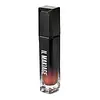What's inside
What's inside
 Key Ingredients
Key Ingredients

 Benefits
Benefits

 Concerns
Concerns

 Ingredients Side-by-side
Ingredients Side-by-side

Pentaerythrityl Tetraisostearate
EmollientPolybutene
Octyldodecanol
EmollientMicrocrystalline Wax
Emulsion StabilisingPolyglyceryl-3 Diisostearate
EmulsifyingParaffin
PerfumingBis-Diglyceryl Polyacyladipate-2
EmollientOctyldodecyl Stearoyl Stearate
EmollientEuphorbia Cerifera Wax
Ozokerite
Emulsion StabilisingBehenoxy Dimethicone
EmollientHdi/Trimethylol Hexyllactone Crosspolymer
Aroma
Aluminum Hydroxide
EmollientTocopheryl Acetate
AntioxidantCaprylic/Capric Triglyceride
MaskingSilica
AbrasiveBenzyl Alcohol
PerfumingHoya Lacunosa Flower Extract
Skin ConditioningCI 77891
Cosmetic ColorantIron Oxides
CI 15850
Cosmetic ColorantCI 42090
Cosmetic ColorantCI 19140
Cosmetic ColorantCI 45410
Cosmetic ColorantPentaerythrityl Tetraisostearate, Polybutene, Octyldodecanol, Microcrystalline Wax, Polyglyceryl-3 Diisostearate, Paraffin, Bis-Diglyceryl Polyacyladipate-2, Octyldodecyl Stearoyl Stearate, Euphorbia Cerifera Wax, Ozokerite, Behenoxy Dimethicone, Hdi/Trimethylol Hexyllactone Crosspolymer, Aroma, Aluminum Hydroxide, Tocopheryl Acetate, Caprylic/Capric Triglyceride, Silica, Benzyl Alcohol, Hoya Lacunosa Flower Extract, CI 77891, Iron Oxides, CI 15850, CI 42090, CI 19140, CI 45410
Polybutene
Hydrogenated Polydecene
EmollientOctyldodecanol
EmollientIsocetyl Stearate
EmollientOctyldodecyl Stearoyl Stearate
EmollientDicalcium Phosphate
AbrasiveHydrogenated Styrene/Isoprene Copolymer
Silica Dimethyl Silylate
EmollientCalcium Sodium Borosilicate
Mica
Cosmetic ColorantAroma
Pentaerythrityl Tetra-Di-T-Butyl Hydroxyhydrocinnamate
AntioxidantTocopherol
AntioxidantTin Oxide
AbrasiveLinalool
PerfumingCI 19140
Cosmetic ColorantCI 15850
Cosmetic ColorantCI 77891
Cosmetic ColorantCI 42090
Cosmetic ColorantCI 77491
Cosmetic ColorantPolybutene, Hydrogenated Polydecene, Octyldodecanol, Isocetyl Stearate, Octyldodecyl Stearoyl Stearate, Dicalcium Phosphate, Hydrogenated Styrene/Isoprene Copolymer, Silica Dimethyl Silylate, Calcium Sodium Borosilicate, Mica, Aroma, Pentaerythrityl Tetra-Di-T-Butyl Hydroxyhydrocinnamate, Tocopherol, Tin Oxide, Linalool, CI 19140, CI 15850, CI 77891, CI 42090, CI 77491
Ingredients Explained
These ingredients are found in both products.
Ingredients higher up in an ingredient list are typically present in a larger amount.
Aroma refers to an ingredient, or mixture of ingredients, that impart or mask a flavor.
The name is slightly confusing. This is because INCI associates aroma with flavor instead of smell.
Here is the official definition from the The International Cosmetic Ingredient Dictionary and Handbook:
“Aroma is a term for ingredient labeling used to identify that a product contains a material or combination of materials normally added to a cosmetic to produce or to mask a particular flavor.”
INCI shows the only purpose of aroma to be "flavouring".
However, due to regulation differences, some companies may use aroma in place of parfum.
In Canada, this ingredient only has to be listed in concentrations above 1%.
Learn more about AromaCi 15850 is the pigment color red. It is an azo dye and created synthetically.
Azo dyes need to be thoroughly purified before use. This allows them to be more stable and longer-lasting.
This ingredient is common in foundations, lipsticks, and blushes. This color is described as brown/orangey red.
It has many secondary names such as Red 6 and Red 7. According to a manufacturer, Red 6 usually contains aluminum.
Learn more about CI 15850CI 19140 is also known as Tartrazine. Tartrazine is a synthetic dye used in cosmetics, foods, and medicine to add a yellow color.
Tartrazine is created from petroleum and is water-soluble.
Some people may experience allergies from this dye, especially asthmatics and those with an aspirin intolerance.
Learn more about CI 19140Ci 42090 is a synthetic dye created from petroleum. It is used to give a bright blue color to cosmetics, medicine, and food.
Ci 77891 is a white pigment from Titanium dioxide. It is naturally found in minerals such as rutile and ilmenite.
It's main function is to add a white color to cosmetics. It can also be mixed with other colors to create different shades.
Ci 77891 is commonly found in sunscreens due to its ability to block UV rays.
Learn more about CI 77891Octyldodecanol is a fatty alcohol. It is primarily used to enhance the texture of products.
As an emulsifier, Octyldodecanol helps prevent the oils and waters from separating. It also prevents ingredients from creating foam when shaken.
Octyldodecanol is created by reducing fatty acid to an alcohol.
Due to its high molecular weight, it does not get absorbed into the skin.
Learn more about OctyldodecanolOctyldodecyl Stearoyl Stearate is created from stearic acid.
It is an emollient and thickens the lipid (oil) portion of a product. Due to its emollient properties, it may not be fungal-acne safe.
Polybutene is used to help control the viscosity of a product. This just means it helps adjusts the texture.
It is a polymer and does not get absorbed into the skin due to its large size.
Studies found this ingredient did not irritate skin in concentrations below 15%.
Learn more about Polybutene